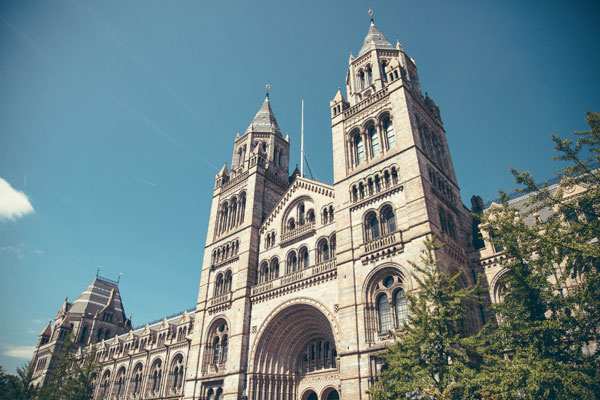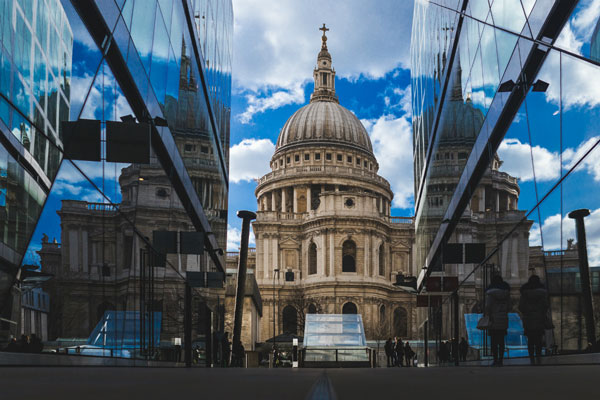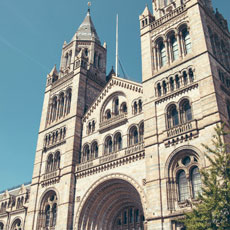
On college campuses and in neighborhoods around the country, owners of historic buildings face some unique challenges.
After all, how do you take a structure that was built 100, maybe 200 years ago and make it compatible with the needs of 21st Century occupants, all the while preserving the building’s history?
It’s a delicate balancing act — one that requires much more than some simple retrofits. But modernizing historic buildings is a worthwhile cause, and not just for the sake of preserving history.
Below, we’ll look at how six different landmark buildings underwent their own unique modernization processes, projects all spearheaded by the thoughtful efforts of a talented facilities manager.
But first, let’s spend a minute defining the challenges of historic building modernization.
The Business Case for Modernizing Historic Buildings
Preserving a building’s legacy is just one reason to take on a modernization project. Another reason is purely financial: Historic buildings are more expensive to maintain, and their energy inefficiencies result in lots of money going out the door each month. In most cases, a thorough overhaul of a building’s infrastructure will also save owners money in the long run.
As Tammy Fulop, VP of energy and sustainability services at Schneider Electric, tells AutomatedBuildings.com, many municipalities have landmarks such as city halls and courthouses that hold a symbolic importance for community members.
But too often, efforts to modernize or even maintain these buildings fall behind, and that problem just gets bigger and bigger over time. “The complexity of balancing modernization and historical preservation can often feel at odds and become a burden that stalls these projects,” Fulop says. “As a result, deferred maintenance issues mount to the point that some buildings simply get shut down — or torn down — rather than renovated properly.”
As with so many things in life, it’s better for building owners to tackle these big modernization projects as early as possible, before troubles mount. Otherwise, building owners eventually will face the prospect of having to tear down an old building and put another structure in its place.
That’s the expensive option. As the EPA points out, “A new, green, energy-efficient office building that includes as much as 40 percent recycled materials would nevertheless take approximately 65 years to recover the energy lost in demolishing a comparable existing building.”

Working Around the Challenges Historic Buildings Present
Still, modernizing a historic building is a lot of work. Electrical systems usually need to be replaced or installed for the first time, for example, but it’s unlikely that any such building would have a raised floor or ceiling panels to allow for access to all the wiring.
That means some creativity is needed.
As the Whole Building Design Guide’s historic preservation team writes, FMs must design these solutions for future flexibility: Install wiring that can be reversed, host bigger components such as servers off-site, and don’t let electric or IT infrastructure interfere with the building’s structural integrity. Wireless solutions are often a good fit for such buildings.
From an energy efficiency standpoint, however, some older buildings can be surprisingly easy to work with because they were built well before air-conditioning and central heating existed. Thus, the original designs make the spaces more comfortable in very hot or very cold weather.
In previous years, such buildings got a pass from the International Energy Conservation Code, but that changed in 2015. Now, older building owners must apply for an exemption from the IECC, Carl Weinschenk at Energy Manager Today reports, which means historic buildings are facing new challenges with questions of energy efficiency, and “a new relationship must be created between people whose primary interest is in energy efficiency and the preservationists who suddenly have to think more deeply about the subject.”
With these thoughts in mind, let’s take a look at six different successful modernization projects, and explore what impact these updates had for building owners.
1. Fresno City College, California
This 100-plus-year-old college campus has a few entries on the Federal List of Historical Buildings, but its old administration building sat unoccupied for more than 30 years, starting in the 1970s, when California passed new codes for seismic durability, Karen J. Bannan reports at EdTech Magazine.
In 2010, renovation work began to get the building up to code, but this involved walls that were often 3-plus feet thick. That was a problem for electricity and IT infrastructure.
The school’s solution? Go wireless.
“The college had wireless installed prior to 2010 in other campus buildings using a controller-based solution,” Bannan writes. “Controllerless technology from Aerohive allowed the IT team to install wireless access points in low-profile locations, without detracting from the beauty of the building, [interim director of technology Harry Zahlis] said.
“‘We ended up putting an AP in every classroom, and it’s working out well. The best part is that we have been able to maintain the integrity of the classrooms, and everything looks just like it did a century ago.’”
2. Middlebury College, Vermont
In 2016, Middlebury College announced its 160-year-old president’s house had earned LEED Platinum certification from the USGBC after a renovation project to the 6,000-square-foot building that took more than a year to complete. Renovations included the installation of geothermal wells and an array of solar panels, which produce a fifth of the building’s electrical energy.
“This project took an old house that was a real energy user and transformed it into a model of efficiency,” said architect Steve Smith, who oversaw the renovation. This is now the college’s fifth LEED-certified building.

3. Russ Building, California
Shorenstein Properties, owners of downtown San Francisco’s iconic Russ Building, announced in August that the building had been given a LEED Platinum re-certification after its team made further improvements after the building’s 2011 LEED Gold certification.
The 32-story Russ Building, built in 1926, boasts an ENERGY STAR score of 98, LEED-compliant pest control procedures, and encourages occupants to adopt more sustainable transportation by offering secure bike storage and on-site electrical vehicle charging.
Another important component of the Russ Building’s sustainability is the green coating applied by GLOBAL Encasement, Inc., which added an environmentally friendly coating layer that seals surfaces without trapping moistures, helps combat rust and corrosion, and preserves many of the original details designed into the building’s architecture.
4. Bexar County Courthouse, Texas
The team at ProudGreenBuilding recently highlighted the work LG did at the Bexar County Courthouse in San Antonio, which had its detailing slowly eroded over the years by clumsy installations of things such as HVAC.
So, a project to restore the building to the way it looked in 1896 was undertaken, but a key point was to maintain modern levels of comfort — important for a place as hot as South Texas. LG’s solution was to install several water-cooled, variable-refrigerant flow units (47 in total, the first such units in San Antonio) around the ceiling, then integrate the controls so county officials could monitor the HVAC system remotely.
The results? County officials were elated, and at the ribbon-cutting ceremony presented the Bexar County Historical Commission with an award for distinguished service.

5. Black’s Building, Iowa
Black’s Building in Waterloo, Iowa, originally built 100 years ago to house Black’s department store, recently underwent an LED retrofit lighting upgrade that saved building owners massive amounts of money.
As lighting supplier Van Meter Inc. writes, the owners had been replacing fluorescent bulbs in that building on a daily basis and recognized the need for change. Van Meter recommended Philips EvoKit LED retrofit kits, which offered energy savings of up to 50 percent.
The retrofit was a success. Van Meter estimates the building’s owners saved around $24,000 on energy costs in just the first year since the renovation, and in the process increased the building’s value by $300,000.
6. The Mary Rose Museum, England
Here’s one from the UK, where buildings are often centuries older than those in the States and thus require even more modernization work.
The Mary Rose Museum is a special case. The Mary Rose was a warship built in 1510 and in service until 1545, when it sank. It took another 340 years (and a team of 500 people) before the ship was raised out of the water and brought to Portsmouth Historic Dockyard, on the country’s southern coast, where it began a decades-long conservation process.
In 2011, the IMC Group writes, The Mary Rose was moved to a special chamber for the last phase of its conservation, a five-year drying-out period. The Portsmouth Historic Dockyard team turned to Hanwell for a temperature and humidity monitoring solution to ensure the conditions inside that chamber remained consistent over those five years.
The project was successful, and in 2016 The Mary Rose was freed from her chamber and is now on display for visitors.
Credits:
Anthony DelanoixMike Taylor
Herman Lucio
Luis Llerena

